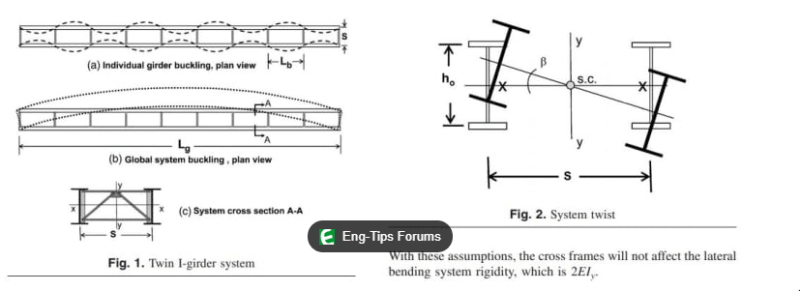Hi,
When there are primary beams 30 foot long on 5 or 6 rows and there are secondary beams connected to the primary beams at 5'-0" O.C via full-depth stiffeners and both beams are flush ( at the same level). Assuming there is no decking or flooring diaphragm spanning and connected to the secondary beams. The depth of both primary and secondary beams are the same.
Does the 5'-0" O.C center secondary beam coonx. provide brace points for the 30-foot-long beams and reduce their unbraced length to 5'?
Thank you
When there are primary beams 30 foot long on 5 or 6 rows and there are secondary beams connected to the primary beams at 5'-0" O.C via full-depth stiffeners and both beams are flush ( at the same level). Assuming there is no decking or flooring diaphragm spanning and connected to the secondary beams. The depth of both primary and secondary beams are the same.
Does the 5'-0" O.C center secondary beam coonx. provide brace points for the 30-foot-long beams and reduce their unbraced length to 5'?
Thank you

